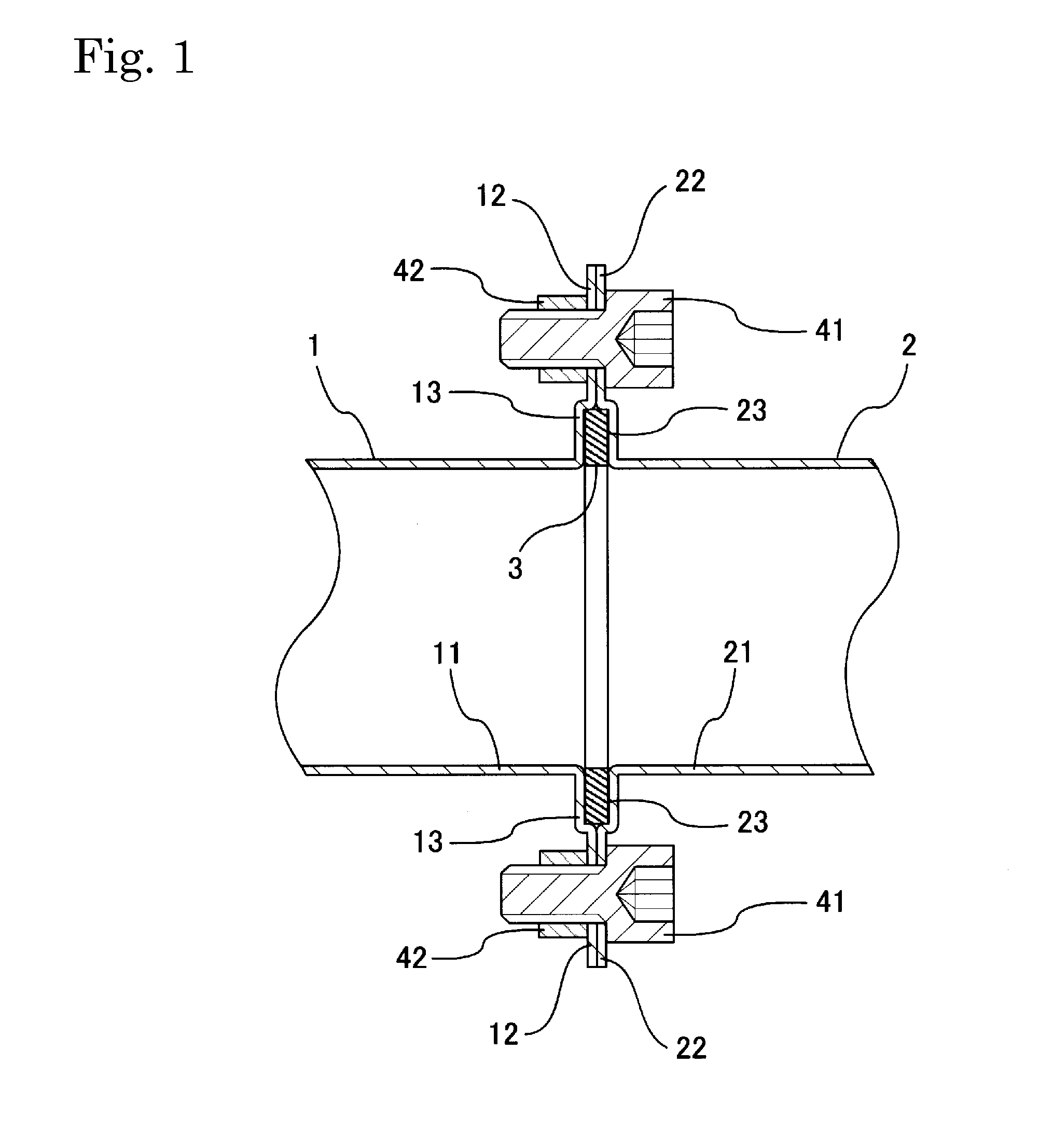Pipe flange forming method
- Summary
- Abstract
- Description
- Claims
- Application Information
AI Technical Summary
Benefits of technology
Problems solved by technology
Method used
Image
Examples
Embodiment Construction
[0025]FIG. 1 shows a representative example of an upstream exhaust pipe 1 joined to a downstream exhaust pipe 2 via pipe-end flanges 12, 22 formed in accordance with the below-described method. More specifically, radially-outwardly-extending pipe-end flanges 12 and 22 are formed at an opening edge of an opening of a downstream end 11 of the upstream exhaust pipe 1 and at an opening edge of an opening of an upstream end 21 of the downstream exhaust pipe 2, respectively. The pipe-end flanges 12 and 22 are coupled together via bolts 41 and nuts 42 with a sealing member or gasket 3 interleaved in a space defined by recessed housing portions 13 and 23. The pipes 1, 2 and flanges 12, 22 are preferably formed of malleable steel, although other heat-resistant, malleable materials may be utilized for vehicle applications. For non-vehicle applications, the material forming the pipe 1, 2 and flange 12, 22 need not be heat-resistant, but it should be ductile or malleable, i.e. it should be plas...
PUM
| Property | Measurement | Unit |
|---|---|---|
| Diameter | aaaaa | aaaaa |
Abstract
Description
Claims
Application Information
 Login to View More
Login to View More - R&D
- Intellectual Property
- Life Sciences
- Materials
- Tech Scout
- Unparalleled Data Quality
- Higher Quality Content
- 60% Fewer Hallucinations
Browse by: Latest US Patents, China's latest patents, Technical Efficacy Thesaurus, Application Domain, Technology Topic, Popular Technical Reports.
© 2025 PatSnap. All rights reserved.Legal|Privacy policy|Modern Slavery Act Transparency Statement|Sitemap|About US| Contact US: help@patsnap.com



